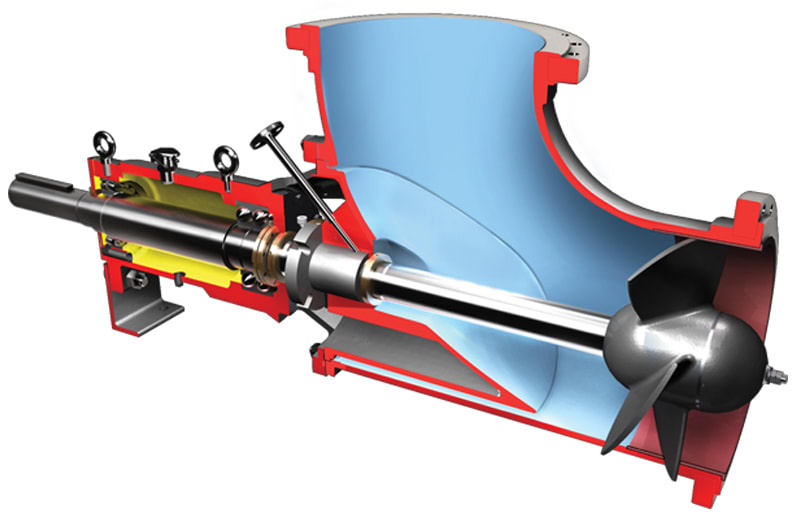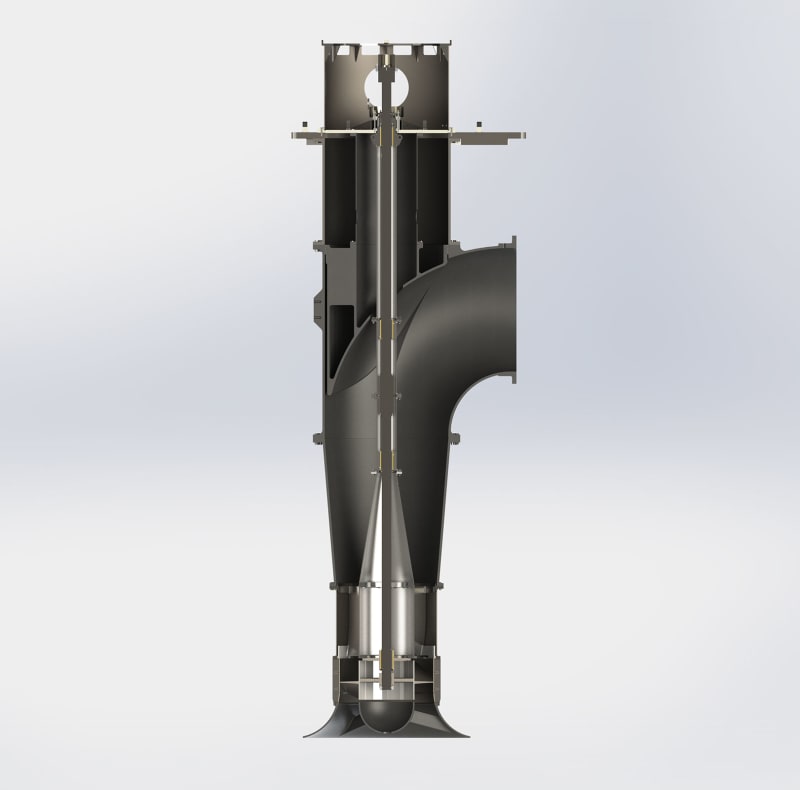electricpete
Electrical
I have a question about Goulds WE0511HH pumps that we use in a sump application: Submersible Pump. 1/2 HP, 115 Volt, 60 Hz, 3.87″ Impeller, 2″ NPT Discharge, 20′ Cord, 3/4″ Solids.
I'm not sure where is the best place to find info on this pump (google floods me with distributors), but here is a link
Question 1: what does the bhp vs flow curve look like? Does bhp increase with flow, or decrease with flow, or increase then decrease with a peak near bep in the middle?
Question 2 (if question 1 is unknown / ambiguous): what is the construction of the pump (axial flow, radial flow, number of stages)?
I think it's radial flow single stage. I’m under the impression single stage radial flow pumps generally have increasing bhp vs flow while single stage axial flow pumps generally have decreasing bhp vs flow.
Background: We have some chronic problems with this pump tripping, often on start, sometimes during run. Historically we have focused a lot on filtering the suction and blamed the trips on debris. We just noticed we have Bussman KTK-15 fast act fuse which we’ll be upgrading to KTK-20 in hopes to solve the problem. Beyond that we’d still like to understand what role is the system operating point (flow resistance) and also the impact of debris that might end up obstructing flow (we immediately neck the 2” discharge of the pump down to ¾” pipe). Obviously if debris jams the pump that would cause trip but I'm just interested in the effect of the operating point on the current. There are other people here involved reviewing other aspectsm but my piece is just the question about effects of operating point effects on current.
=====================================
(2B)+(2B)' ?
I'm not sure where is the best place to find info on this pump (google floods me with distributors), but here is a link
Question 1: what does the bhp vs flow curve look like? Does bhp increase with flow, or decrease with flow, or increase then decrease with a peak near bep in the middle?
Question 2 (if question 1 is unknown / ambiguous): what is the construction of the pump (axial flow, radial flow, number of stages)?
I think it's radial flow single stage. I’m under the impression single stage radial flow pumps generally have increasing bhp vs flow while single stage axial flow pumps generally have decreasing bhp vs flow.
Background: We have some chronic problems with this pump tripping, often on start, sometimes during run. Historically we have focused a lot on filtering the suction and blamed the trips on debris. We just noticed we have Bussman KTK-15 fast act fuse which we’ll be upgrading to KTK-20 in hopes to solve the problem. Beyond that we’d still like to understand what role is the system operating point (flow resistance) and also the impact of debris that might end up obstructing flow (we immediately neck the 2” discharge of the pump down to ¾” pipe). Obviously if debris jams the pump that would cause trip but I'm just interested in the effect of the operating point on the current. There are other people here involved reviewing other aspectsm but my piece is just the question about effects of operating point effects on current.
=====================================
(2B)+(2B)' ?





